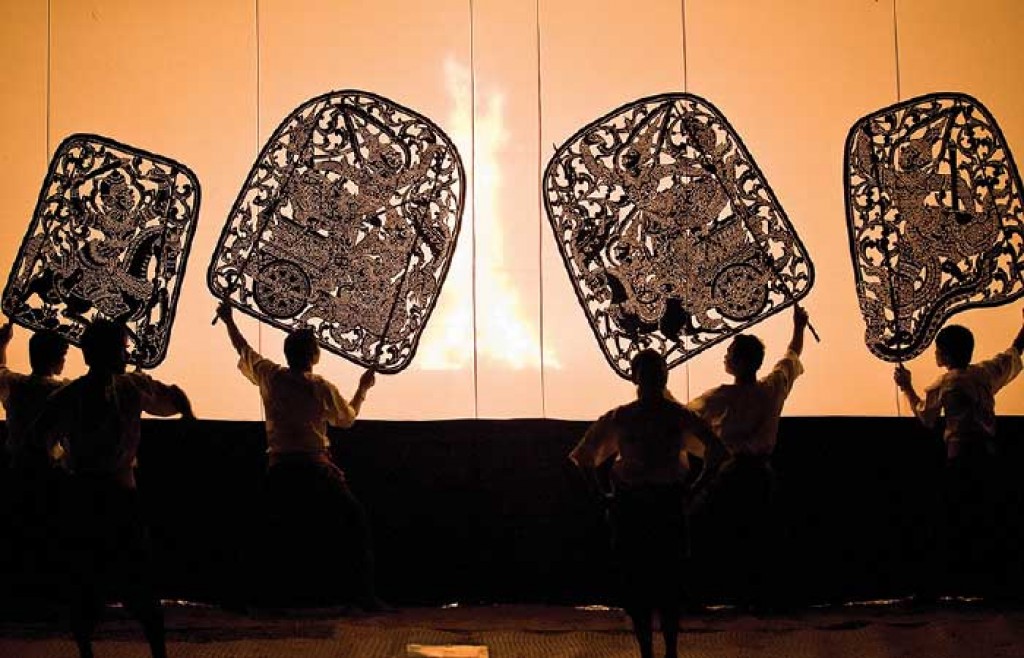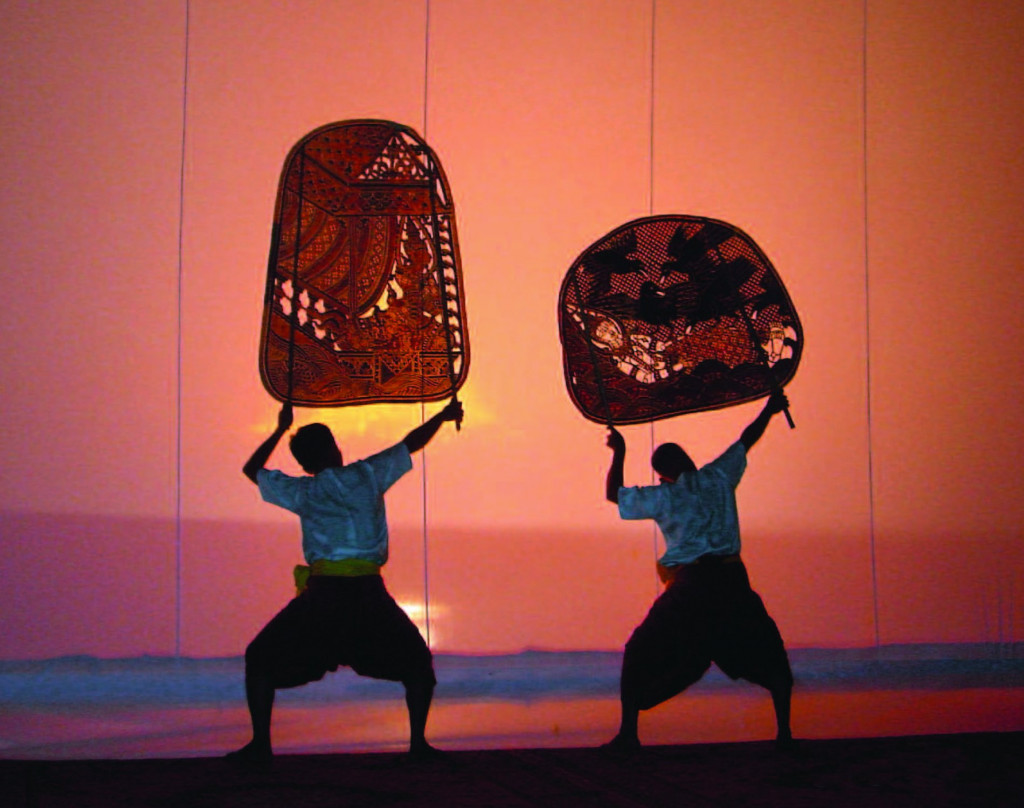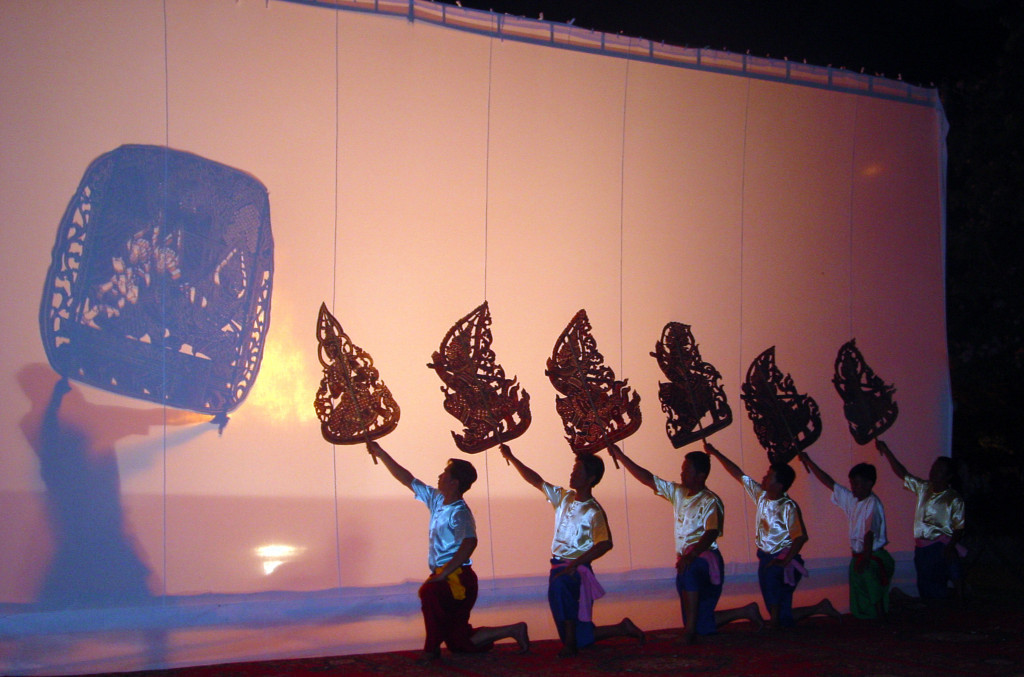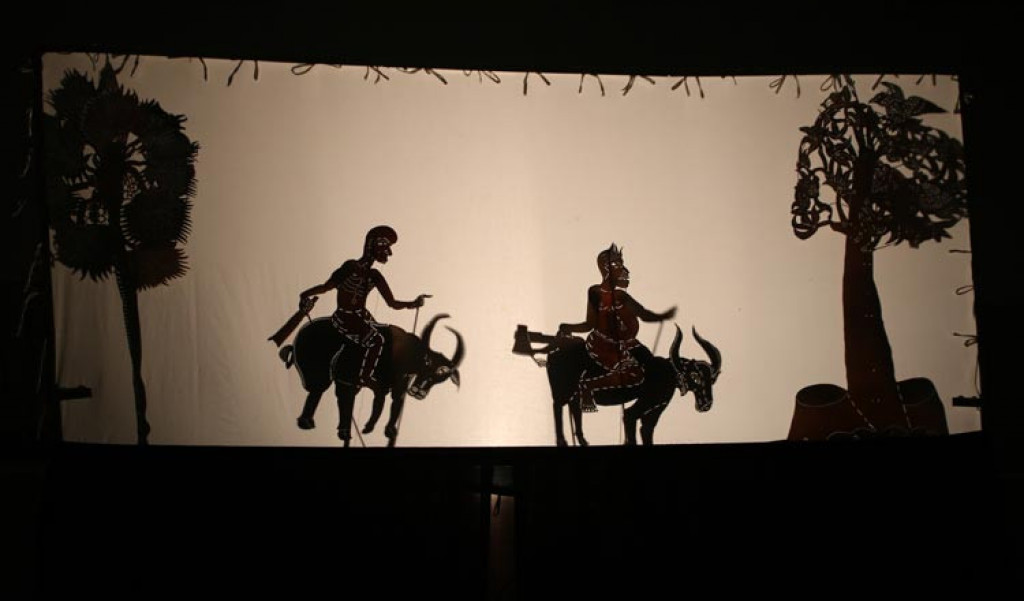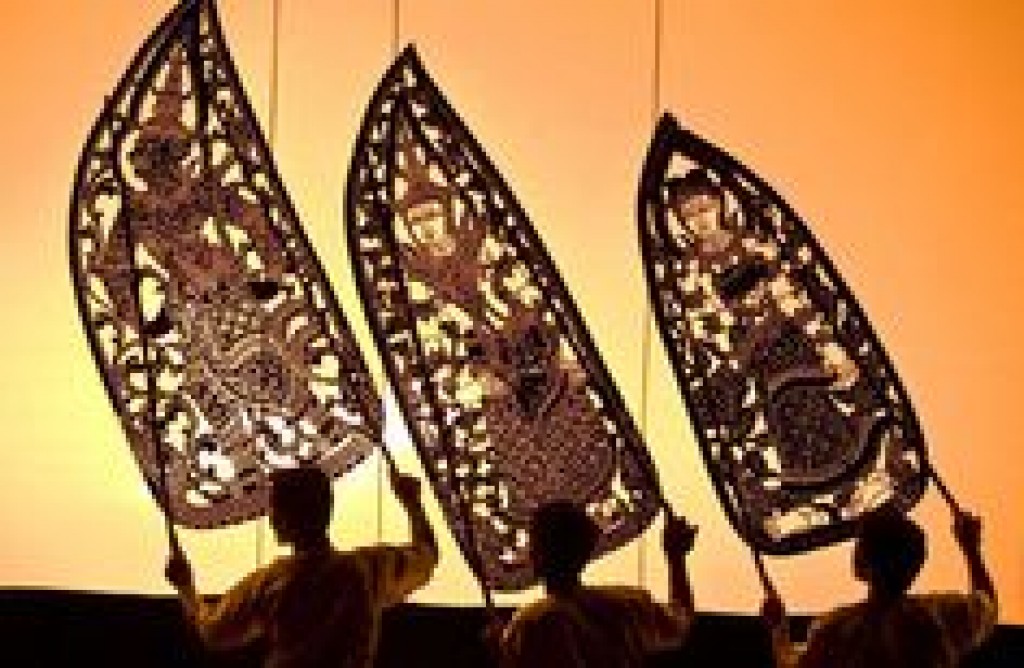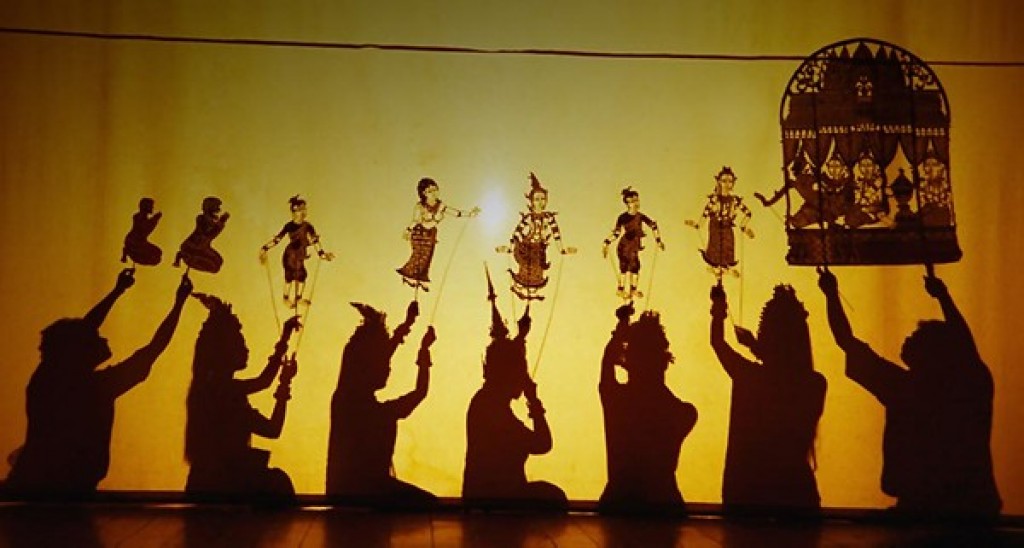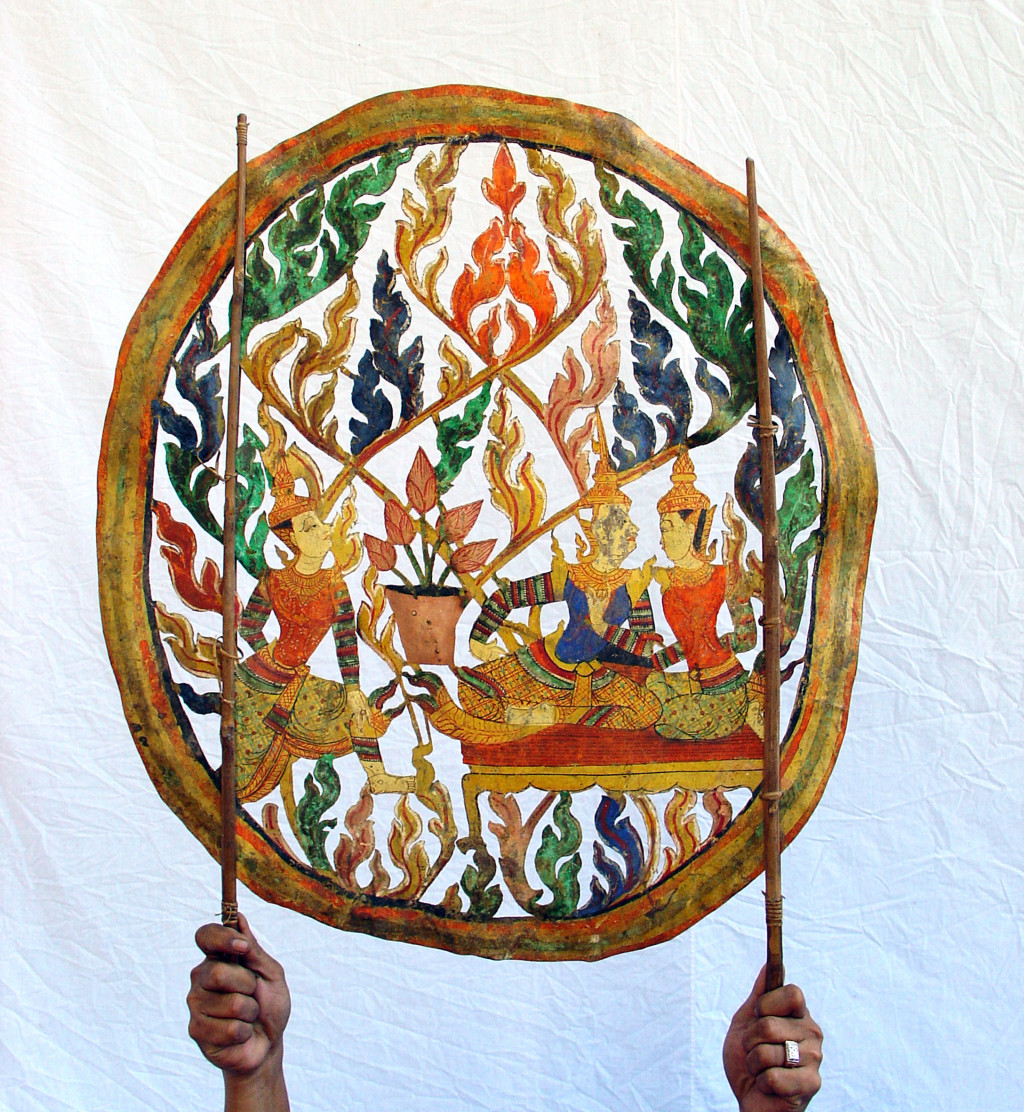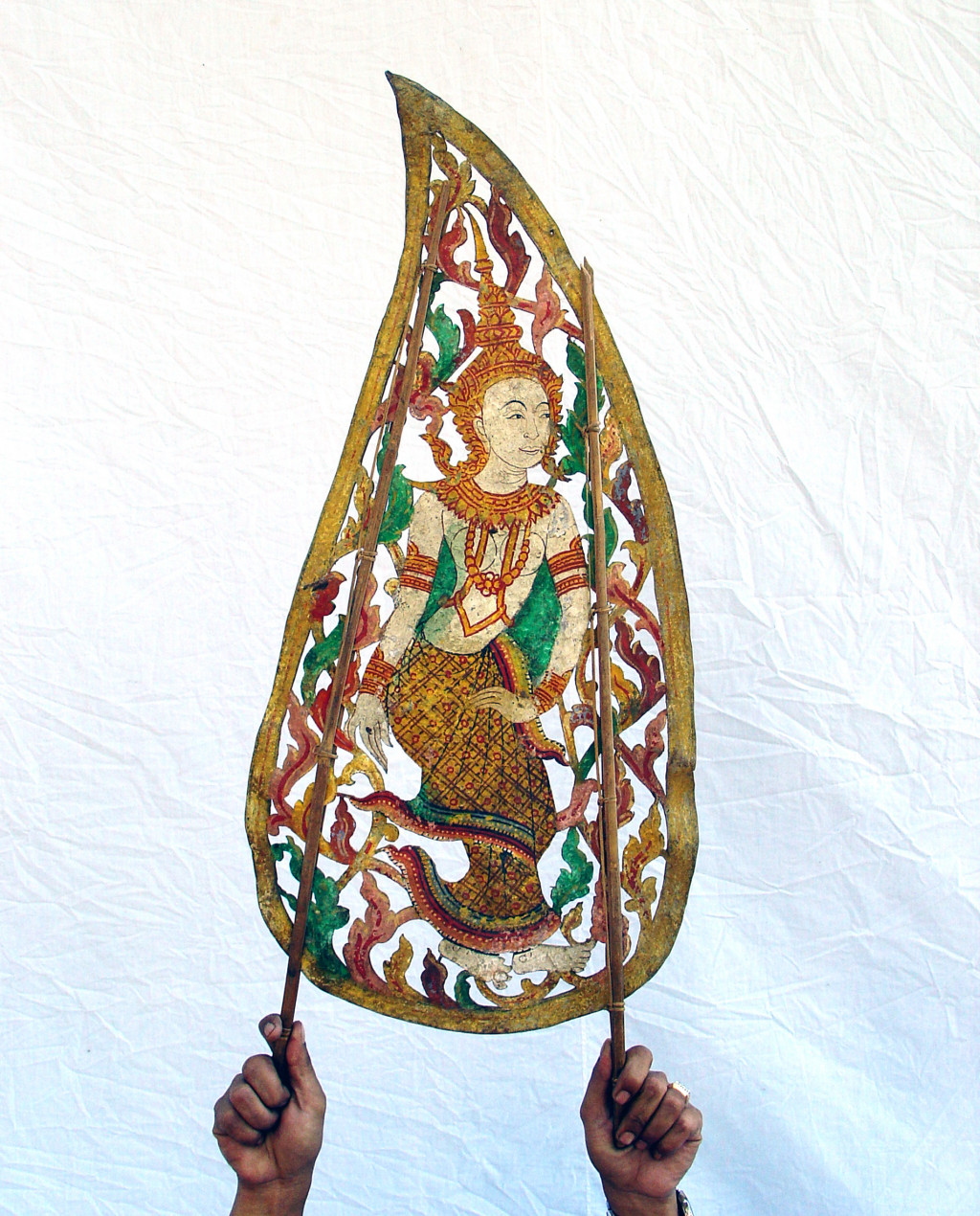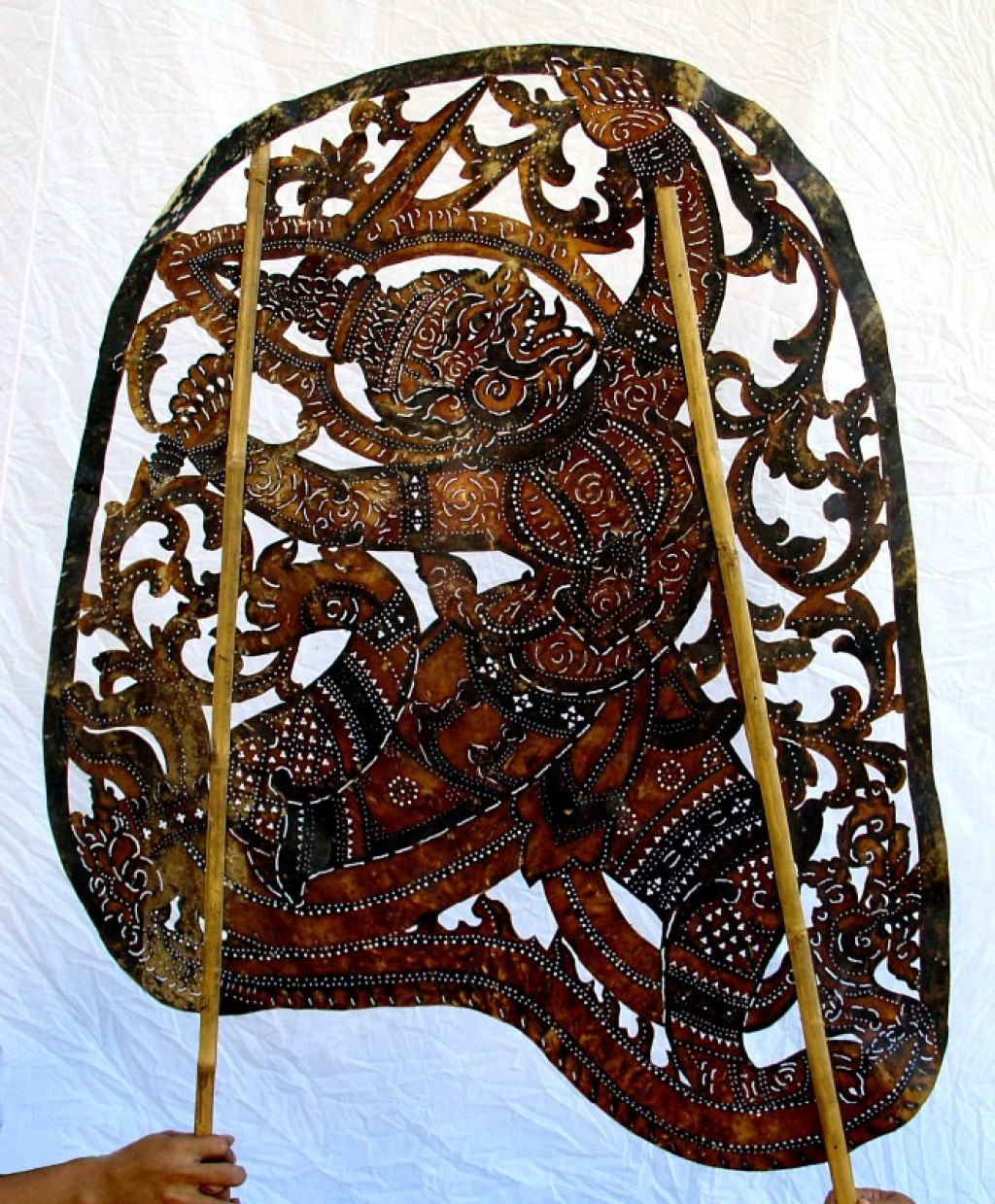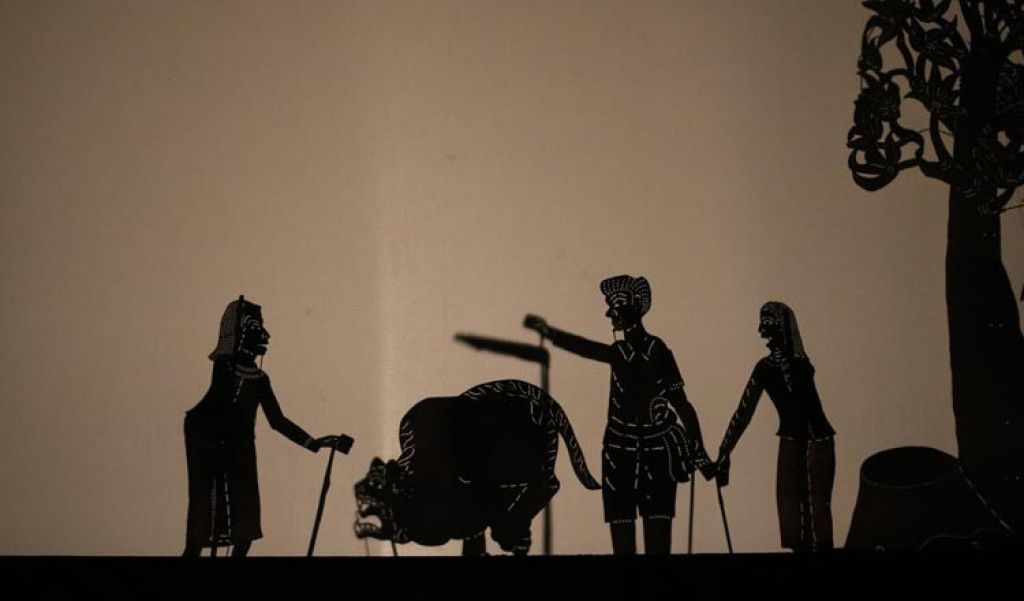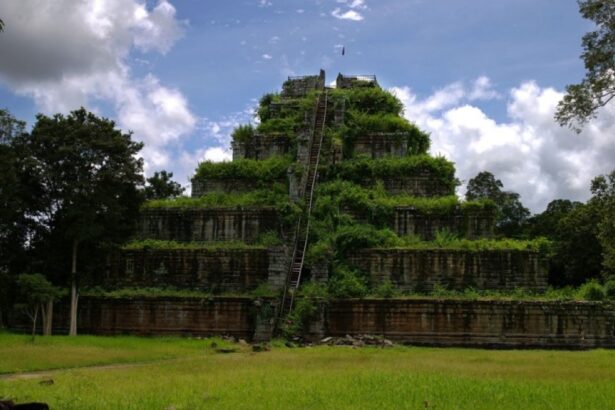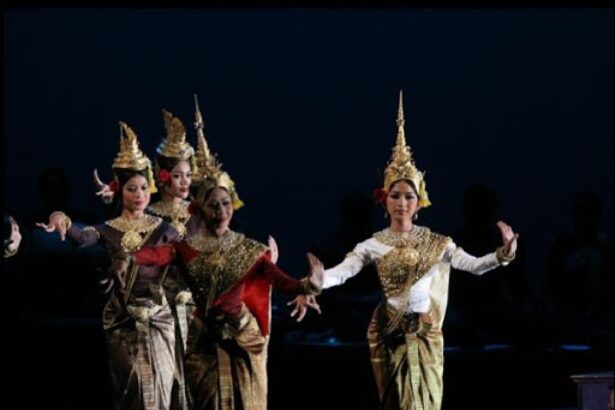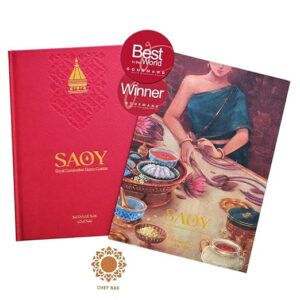It is believed shadow leather originated in Cambodia probably in the pre-Angkor period. Based on the evidence, for example, the stone inscription (K.155) at Kuk Roka, Kampong Thom from the pre-Angkor period, which describes woman puppeteers in a performance using figures in a ceremony invoking Sarasvati, the goddess of learning and the arts. This confirms the use of small puppet images in religious ceremonies. Based on this inscription, we believe that Khmer puppets originated in the pre-Angkor period (9th Century).

The exact reasons are still unknown but some research has pointed to the form growing out of a religious context in which Brahmanism was in conflict with Buddhism during the reign of King Jayavarman VIII (1243-1295). During this time, many female dancers were killed and others were taken on as concubines. Training male dancers was an opportunity to recreate a dance form based on Buddhist doctrines, The only story specifically performed by Lakhaon Khaol is the Reamker, the Khmer version of the Ramayana. The performance is accompanied by storytelling. with the narrators playing a key role in directing the performance, it is accompanied by the traditional pin peat orchestra.
Lakhaon Khaol was very popular in the Lon Nol regime and later favorite of King Sihanouk. At that time, there were eight professional troupes. The troupes were disbanded during the war and today the only original troupe remaining is that of “Wat Svay Angdet”, 15 kilometers from Phnom Penh. Two new troupes have formed since the war, which includes Kampong Thom troupe and the troupe of the National Theater (Department of Performing Arts of the Ministry of Culture and Fine Arts.)
Dating from before the Angkorian period, the Sbek Thom, along with the Royal Ballet and mask theater, is considered sacred. Dedicated to the divinities, performances could only take place on specific occasions three or four times a year, such as the Khmer New Year, the King’s birthday or the veneration of famous people. After the fall of Angkor in the fifteenth century, the shadow theater evolved beyond a ritualistic activity to become an art form, while retaining its ceremonial dimension.
There are three kinds of shadow theatre in Cambodia:
- Sbek Thom (large shadow theatre): it belongs to a group of large figures (made from buffalo and cow skin), which are not able to move their hands, legs, or mouths. In 1968, a Sbaek Thom troupe was estab¬lished within the Classical Dance Troupe that later became the Department of Performing Arts. After 1979, artists who survived the Khmer Rouge period gath¬ered shadow puppets from different places in the country in order to continue performing. In 1991, the French government donated one set of large shadow to Prof. Pich Tum Kravel who choreographed two excerpts from the Reamker: “Chambang Indra it. (The Battle of Indrachit), and Chambang Sar Neak Kabas (The Battle of Sar Neak Kabas). In 2000, a new set of Sbaek Thom was given to Prof. Hang 50th (Ministry of Culture), with the support of UNESCO and donated to a troupe in Banteay Meanchey province.
- Sbek Touch also called Ayang (small shadow theatre): These figures are able to move their limbs and exhibit facial expressions. Sbek Touch uses smaller puppets and tell ancient and contemporary folktales with comic characters, and originally performed in villages. Lakhaon Sbaek touch was first introduced in Kompong Tayong village, Siem Reap province.
- Sbek Paor (colored puppet theatre). This kind of puppet is strictly not a form of shadow theatre, as it is performed in daylight. Lakhaon Sbaek Por (or sbaek kandal) was created in the Chaktomuk period between 1859-1904, with the support of Queen Sisowath Kosamak Neari Rath. A variety of different colors were used to paint the figures often decorated by ph’nhi tes (Angkor stylized) ornaments on medium-sized cut leather. The puppets have no moving parts but are presented in one panel, similar to Sbaek Thom, the large shadow puppet theatre. Artists perform in front a large black screen and wear costumes relevant to the story. This art form is performed in anytime only. Lakhaon Sbaek Por was reinstituted with the support of UNESCO in 2001.
The puppets are made from a single piece of leather (for example, buffalo/cow skin) in a special ceremony for each character representing gods and deities. The hides are dyed with a solution made from the bark of the Kandaol tree. The artisan draws the desired figure on the tanned hide, then cuts it out and paints it before attaching it to two bamboo sticks enabling the dancer to control the puppet.
The performances traditionally take place at night outdoors beside a rice-field or pagoda. A large white backdrop is held between two tall bamboo screens in front of a large fire or, nowadays, projectors. Behind the screen, a low rectangular frame is built of banana trunks; it will contain the fire that will serve as the light source for casting the shadows of the puppets onto the screen. The raw materials for the fire are coconut shells or firewoods.
We can see that Lakhaon Khol (Mask Theatre) and Sbek Thom (Large Shadow Theatre) in Cambodia only perform the Reamker epic and we know that it originated from the Indian Ramayana. Although Sbek Thom plays only the Reamker epic, it never starts from the beginning to the end of the story, it just adopted some scenes in the whole story.
In general, among more than hundreds of Sbaek Thom figures in our collection that we have left today, most of them belong to the Indrajit’s battle episode who is the son of Ravana. Indrajit battled with Laksmana, younger brother of Rama. We usually this scene into three sub-scenes named for the main events in the battle. They are as follows: First, is Sor Neakabas. Second, is Sor Programmes: as the arrow that Indrajit shoots at Preah Leak. Third, is Sor Poan: Preah Leak’s powerful arrow which, when it hits Indrajit. For these sections, it took at least a week for our ancestors to finish these parts of the story. But in the past, we could have summarized to perform into three or four nights. Nowadays, we just briefly perform a short scene from 17 to 20 minutes, due to time limits.
There is not only Cambodia having these performance arts but also other countries in the Asian region such as India, Thailand, Indonesia, Malaysia, and Myanmar. However, the special and unique point of Khmer Shadow theater, Sbek Thom, it was proclaimed as World Intangible Heritage by UNESCO on 25th November 2005. In contrast, the popularity of this kind is very low not even to mention the recognition, the number of performance is decreasing. There is no many Khmer audiences come to see the show at all due to the spread of modern technology such as movies, videos, and television.
The shadows of the puppet’s silhouettes are projected onto the white screen. The animators bring the puppets to life with precise and specific dance steps. The performance is accompanied by an orchestra and two narrators. Inspired from the Reamker, the Khmer version of the Ramayana, the performances stage scenes of this epic, which may last several nights and require up to 160 puppets for a single presentation. Many of them were destroyed under the repressive Khmer Rouge regime, which almost annihilated this sacred art. Since 1979, Sbek Thom has been gradually revitalized thanks to the few surviving artists. So far, three shadow theatres have managed to rise from their ashes, ensuring the transmission of the knowledge and skills, including those relating to puppet making.

